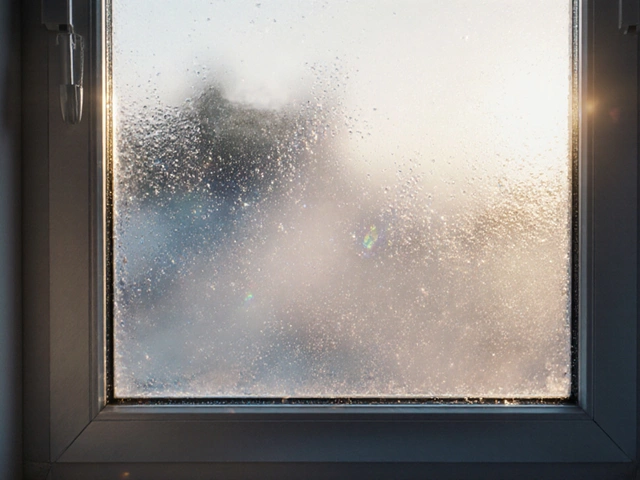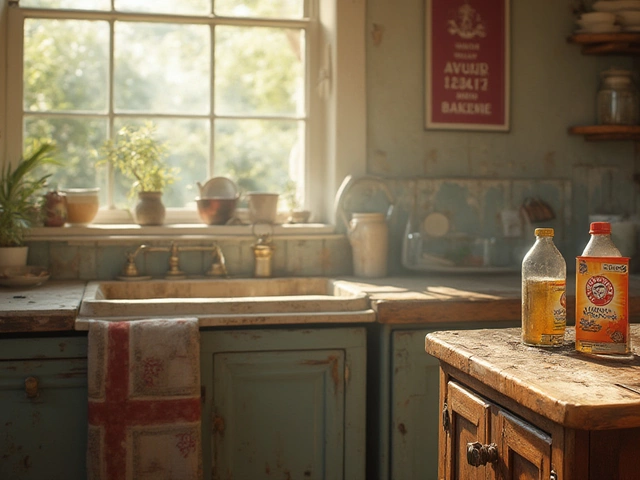If you’ve ever spilled food on your shirt or found an old spot on the couch, you’ve probably wondered if Dawn dish soap—the blue bottle you keep by the sink—could help. People swear by Dawn for greasy pans, but what about stubborn stains on fabric? This idea isn’t just a TikTok hack; it’s a cleaning trick that’s been quietly catching on for a while. Still, you might hesitate if you’re not sure about potential risks to your favorite t-shirt or couch. After combing through expert advice, real home tests, and a ton of laundry forums, I’m here to lay out the facts: Dawn can seriously tackle certain fabric messes, but it comes with a few rules.
Why Dawn Dish Soap Works on Fabric (and When It Doesn't)
Dawn stands out among dish soaps because it’s impressively tough on greasy messes. In fact, wildlife rescuers famously use it on animals after oil spills—that alone tells you something about its cleaning power and relative gentleness. Now, when you spill salad dressing, motor oil, or that stubborn lipstick, fabric usually soaks up the oily residue. Water alone doesn’t cut it, but the surfactants in Dawn break up and lift oils away from the fabric fibers. That’s exactly what makes it so great for greasy kitchenware, and it’s the same chemistry that lets it target fatty stains on clothes, upholstery, or even carpets.
But not all stains or fabrics react the same way. Dawn works its magic best on fresh, oily stains—like pizza grease, butter, or that dark spot from yesterday's barbecue sauce. It’s less amazing on protein stains (blood, egg), tannins (wine, coffee), or set-in stains that have already been hit with heat in the dryer. When it comes to delicate fabrics like silk, wool, or vintage textiles, pause before grabbing the dish soap. Dawn’s concentrated formula is stronger than most laundry detergents. For synthetics, cotton, and even most upholstery blends, though, it’s a handy secret weapon. My neighbor used Dawn to save her son’s football jersey after a nacho cheese incident—she mixed a couple of drops with warm water, dabbed, and the yellow goo just melted off. Her method is pretty common: use just a drop, diluted, and don't let it sit for hours.
There’s a real-world risk, though, if you use too much Dawn. It’s so good at cutting grease that it can also lift dyes out of some fabrics, causing spots or fading—especially if you leave it on too long or scrub hard. And if you skip a thorough rinse, soap residue can attract more dirt over time, which is the last thing you want on a sofa.

How to Use Dawn Dish Soap on Fabric: A Step-by-Step Guide
So, how exactly should you use Dawn to clean fabric—without creating a bigger problem? The trick is to go gently and use it sparingly. Here’s a solid method that professional cleaners often recommend (and yes, many listing reputable franchises quietly use dish soap for spot treatments, especially on upholstery):
- Blot, don’t rub: If the stain is fresh, quickly blot (not wipe) as much as possible with a clean paper towel or white cloth. Scrubbing pushes the stain deeper.
- Dilute first: Mix one to two drops of Dawn dish soap with a cup of warm water. Never pour Dawn directly onto the fabric—that’s a recipe for residue and possible fading.
- Test a hidden spot: Especially with colored or delicate fabric, test your soapy mix somewhere inconspicuous. Wait 10 minutes to check for fading or weird reactions.
- Dab carefully: Using a clean white cloth or sponge, dab the diluted Dawn mixture onto the stain. Start at the outer edge and work toward the center to avoid spreading.
- Blot and repeat: Dab, then use a fresh damp cloth to rinse the area. Keep blotting until the soap is gone and the stain lifts. Don’t soak the spot; excess liquid may cause water marks.
- Dry the fabric: Absorb excess moisture with a dry towel. For clothes, let them air dry or run a short dryer cycle. Upholstery should dry naturally—avoid heat which can set any remaining stain.
A few more tips? If you’re dealing with set-in stains, Dawn can still help, but you may want to let it sit for 5-10 minutes (after a patch test). Don’t let it dry on the fabric—that’s often when rings or fading happens. For large items (like a couch cushion), try using a spray bottle for the diluted Dawn mix, and always vacuum upholstery before and after treatment to avoid embedding dirt.
Heads up for machine washing: If you add Dawn to your washing machine, be careful! A tiny drop goes a long way. Too much, and your washer could overflow with suds. Stick with laundry detergent for regular loads, trust me.

When to Skip the Dawn and What to Watch Out For
There are a few situations where Dawn isn’t your best bet. On dry clean-only items—think wool suits, silk tops, or heirloom fabric—skip the dish soap. The risk of damage outweighs the benefits, and professional cleaners have gentler, purpose-made solutions. Likewise, old or delicate fabrics with weak dyes could bleed or fade, even with diluted Dawn. Always do a test, and if you see chalky streaks or fading, stop right away.
Leather is another don’t-go-there situation. Dawn can strip the natural oils from leather, leaving it dry or even cracked. Specialized leather cleaners keep those oils balanced and safe. Another caution: some people might get skin irritation from handling dish soap on fabric, especially if their hands are already sensitive. Gloves aren’t drama—they’re just smart.
Laundry pros also notice that using dish soap too often can leave residue if you don’t rinse thoroughly. In the case of *steam cleaners* or extractors, there’s a real risk of foaming and damage to the machine. Always go easy on the amount of soap, and for machines, stick to cleaners labeled safe for upholstery or fabric machines.
So, does Dawn dish soap clean fabric? Yes—if you use it lightly, dilute it properly, and rinse well. It shines with greasy or oily messes, and it’s saved many shirts, sofas, and sneakers. Still, it’s not a cure-all. Know your fabric, spot-test, and treat dish soap as a targeted stain fighter, not a total replacement for regular fabric cleaners. If you follow these tips, you’re far less likely to see soap rings—or ruin a favorite pillow. Sometimes, the humble blue bottle really does come to the rescue.




